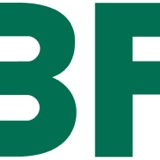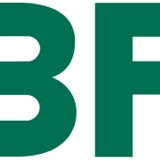Information
-
Audit Title
-
Client / Site
-
Conducted on
-
Prepared by
-
Location
-
Personnel
-
Follow Up to be performed before:
-
Name of person conducting survey:
-
Contact Information:
The hospital designs and manages the physical environment to comply with the Life Safety Code.
-
LS.01.01.01 EP 1. The hospital assigns an individual(s) to assess compliance with the Life Safety Code, complete the eSOC and manage the resolution of deficiencies.
-
Problem identified - Isolated/Facility Wide:
-
Corrective Action Plan:
-
Responsible Party:
-
Expected Date of Completion:
-
LS.01.01.01 EP2 The hospital maintains a current electronic Statement of Conditions. <br>
-
Problem identified -isolated /facility wide:
-
Corrective Action Plan:
-
Responsible Party:
-
Expected Date of Completion:
-
LS.01.01.01 EP3 When the hospital plans to resolve a deficiency through a Plan for Improvement (PFI), the hospital meets the time frames identified in the PFI accepted by The Joint Commission. <br>
-
Problem identified - Isolated/Facility Wide:
-
Corrective Action Plan:
-
Responsible Party:
-
Expected Date of Completion:
-
LS.01.01.01 EP 4 For hospitals that use Joint Commission accreditation for deemed status purposes: The hospital maintains documentation of any inspection and approvals made by state or local fire control agencies.
-
Problem identified - Isolated/Facility Wide:
-
Corrective Action Plan:
-
Responsible Party:
-
Expected Date of Completion:
The hospital protects occupants during periods when the Life Safety Code is not met or during periods of construction. (ILSM)
-
LS. 01.02.01 EP 1 The hospital notifies the fire department (or other emergency response group) and initiates a fire watch when a fire alarm or sprinkler system is out of service more than 4 hours in a 24-hour period in an occupied building. Notification and fire watch times are documented (NFPA 101-2000: 9.6.1.8 and 9.7.6.1)<br>
-
Problem identified - Isolated/Facility Wide:
-
Corrective Action Plan:
-
Responsible Party:
-
Expected Date of Completion:
-
LS.01.02.01 EP 2 The hospital posts signage identifying the location of alternative exits to everyone affected.
-
Problem identified - Isolated/Facility Wide:
-
Corrective Action Plan:
-
Responsible Party:
-
Expected Date of Completion:
-
LS.01.02.01 EP 3 The hospital has a written interim life safety measure (ILSM) policy that covers situations when Life Safety Code deficiencies cannot be immediately corrected or during periods of construction. The policy includes criteria for evaluating when and to what extent the hospital follows special measures to compensate for increased life safety risk. <br>
-
Problem identified - Isolated/Facility Wide:
-
Corrective Action Plan:
-
Responsible Party:
-
Expected Date of Completion:
-
LS.01.02.01 EP4 Inspects exits in affected areas on a daily basis. <br>
-
Problem identified - Isolated/Facility Wide:
-
Corrective Action Plan:
-
Responsible Party:
-
Expected Date of Completion:
-
LS.01.02.01 EP5 Provides temporary but equivalent fire alarm and detection systems for use when a fire system is impaired. <br>
-
Problem identified - Isolated/Facility Wide:
-
Corrective Action Plan:
-
Responsible Party:
-
Expected Date of Completion:
-
LS.01.02.01 EP6 Provides additional firefighting equipment. The need for this equipment is based on criteria in the hospital's interim life safety measure (ILSM) policy.<br>
-
Problem identified - Isolated/Facility Wide:
-
Corrective Action Plan:
-
Responsible Party:
-
Expected Date of Completion:
-
LS.01.02.01 EP7 Uses temporary construction partitions that are smoke-tight, or made of noncombustible or limited-combustible material that will not contribute to the development or spread of fire. <br>
-
Problem identified - Isolated/Facility Wide:
-
Corrective Action Plan:
-
Responsible Party:
-
Expected Date of Completion:
-
LS.01.02.01 EP8 Increases surveillance of buildings, grounds, and equipment, giving special attention to construction areas and storage, excavation, and field offices. <br>
-
Problem identified - Isolated/Facility Wide:
-
Corrective Action Plan:
-
Responsible Party:
-
Expected Date of Completion:
-
LS.01.02.0 EP9 Enforces storage, housekeeping, and debris-removal practices that reduce the building’s flammable and combustible fire load to the lowest feasible level. <br>
-
Problem identified - Isolated/Facility Wide:
-
Corrective Action Plan:
-
Responsible Party:
-
Expected Date of Completion:
-
LS.01.02.01 EP10 Provides additional training to those who work in the hospital on the use of firefighting equipment. <br>
-
Problem identified - Isolated/Facility Wide:
-
Corrective Action Plan:
-
Responsible Party:
-
Expected Date of Completion:
-
LS.01.02.01 EP11 Conducts one additional fire drill per shift per quarter. <br>
-
Problem identified - Isolated/Facility Wide:
-
Corrective Action Plan:
-
Responsible Party:
-
Expected Date of Completion:
-
LS.01.02.01 EP12 Inspects and tests temporary systems monthly. <br>
-
Problem identified - Isolated/Facility Wide:
-
Corrective Action Plan:
-
Responsible Party:
-
Expected Date of Completion:
-
LS.01.02.01 EP13 The hospital conducts education to promote awareness of building deficiencies, construction hazards, and temporary measures implemented to maintain fire safety. <br>
-
Problem identified - Isolated/Facility Wide:
-
Corrective Action Plan:
-
Responsible Party:
-
Expected Date of Completion:
-
LS.01.02.01 EP14 The hospital trains those who work in the hospital to compensate for impaired structural or compartmental fire safety features. <br>
-
Problem identified - Isolated/Facility Wide:
-
Corrective Action Plan:
-
Responsible Party:
-
Expected Date of Completion:
The hospital provides and maintains fire alarm systems.
-
LS.02.01.34 EP1 The fire alarm signal automatically transmits to a Central Monitoring station as described in NFPA 72-1999; 5-2 <br>
-
Problem identified - Isolated/Facility Wide:
-
Corrective Action Plan:
-
Responsible Party:
-
Expected Date of Completion:
The hospital has a written plan for managing the following
-
EC.01.01.01 EP 3 The environmental safety of patients and everyone else who enters the hospital's facilities.
-
Problem identified - Isolated/Facility Wide:
-
Corrective Action Plan:
-
Responsible Party:
-
Expected Date of Completion:
-
EC.01.01.01 EP 4 The security of everyone who enters the hospital's facilities.
-
Problem identified - Isolated/Facility Wide:
-
Corrective Action Plan:
-
Responsible Party:
-
Expected Date of Completion:
-
EC.01.01.01 EP 5 Hazardous materials and waste
-
Problem identified - Isolated/Facility Wide:
-
Corrective Action Plan:
-
Responsible Party:
-
Expected Date of Completion:
-
EC.01.01.01. EP 6 Fire Safety
-
Problem identified - Isolated/Facility Wide:
-
Corrective Action Plan:
-
Responsible Party:
-
Expected Date of Completion:
-
EC.01.01.01 EP 7 Medical Equipment
-
Problem identified - Isolated/Facility Wide:
-
Corrective Action Plan:
-
Responsible Party:
-
Expected Date of Completion:
-
EC.01.01.01 EP 8 Utility Systems
-
Problem identified - Isolated/Facility Wide:
-
Corrective Action Plan:
-
Responsible Party:
-
Expected Date of Completion:
The hospital manages safety and security risks
-
EC.02.01.01 EP 1 The hospital identifies safety and security risks associated with the environment of care that could affect patients, staff, and other people coming to the hospitals facilities<br><br>* Fall protection plan
-
Problem identified - Isolated/Facility Wide:
-
Corrective Action Plan:
-
Responsible Party:
-
Expected Date of Completion:
-
EC.02.01.01 EP 9 The hospital has written procedures to follow in the event of a security incident, including an infant or pediatric abduction.
-
Problem identified - Isolated/Facility Wide:
-
Corrective Action Plan:
-
Responsible Party:
-
Expected Date of Completion:
The hospital prohibits smoking except in specific circumstances
-
EC.02.01.03 EP 1 The hospital has a no smoking policy<br>
-
Problem identified - Isolated/Facility Wide:
-
Corrective Action Plan:
-
Responsible Party:
-
Expected Date of Completion:
-
EC.02.01.03 EP 6 The hospital takes action to maintain compliance with its smoking policy
-
Problem identified - Isolated/Facility Wide:
-
Corrective Action Plan:
-
Responsible Party:
-
Expected Date of Completion:
The hospital manages risks related to hazardous materials and waste
-
EC.02.02.01 EP 3 The hospital has written procedures, including the use of precautions and personal protective equipment, to follow in response to hazardous material and waste spills or exposures..
-
Problem identified - Isolated/Facility Wide:
-
Corrective Action Plan:
-
Responsible Party:
-
Expected Date of Completion:
-
EC.02.02.01 EP 11 For managing hazardous materials and waste, the hospital has the permits, licenses, manifests, and MSDS required by law and regulation.
-
Problem identified - Isolated/Facility Wide:
-
Corrective Action Plan:
-
Responsible Party:
-
Expected Date of Completion:
The hospital manages fire risks
-
EC.02.03.01 EP 1 The hospital minimizes the potential for harm from fire, smoke, and other products of combustion.<br><br>* (Electrical rooms locked at all times,should have "storeroom" type locksets. No storage allowed within 4' of transformers and breaker panels. No combustible materials in any room.<br>* Fire extinguishers are not obstructed<br>* Corridors are reduced to less than 3'
-
Problem identified - Isolated/Facility Wide:
-
Corrective Action Plan:
-
Responsible Party:
-
Expected Date of Completion:
-
EC.02.03.01 EP 9 and EP 10 The hospital has a written fire response plan. The plan describes the specific roles of staff and licensed independent practitioners at and away from a fire's point of origin, including when and how to sound fire alarms, how to contain smoke and fire, how to use an extinguisher, and how to evacuate to areas of refuge.
-
Problem identified - Isolated/Facility Wide:
-
Corrective Action Plan:
-
Responsible Party:
-
Expected Date of Completion:
The hospital conducts fire drills.
-
EC.02.03.03 EP1 The hospital conducts fire drills once per shift per quarter in each building defined as a health care occupancy. <br>
-
Problem identified - Isolated/Facility Wide:
-
Corrective Action Plan:
-
Responsible Party:
-
Expected Date of Completion:
-
EC.02.03.03 EP5 The hospital critiques fire drills to evaluate fire safety equipment, fire safety building features, and staff response to fire. <br>
-
Problem identified - Isolated/Facility Wide:
-
Corrective Action Plan:
-
Responsible Party:
-
Expected Date of Completion:
The hospital maintains fire safety equipment and fire safety building features.
-
EC.02.03.05 EP 1 At least quarterly, the hospital tests supervisory signal devices (except valve tamper switches). <br>NFPA 72, 1999 edition (table 7-3.2)
-
Problem identified - Isolated/Facility Wide:
-
Corrective Action Plan:
-
Responsible Party:
-
Expected Date of Completion:
-
EC.02.03.05 EP 2 Every 3 months, the hospital tests valve tamper switches and water-flow devices. <br>(NFPA 25, 1998 edition (Sections 2-3.3 and 3-3.3) and NFPA 72, 1999 edition (Table 7-3.2)
-
Problem identified - Isolated/Facility Wide:
-
Corrective Action Plan:
-
Responsible Party:
-
Expected Date of Completion:
-
EC.02.03.05 EP 3 Every 12 months, the hospital tests duct detectors, electromechanical releasing devices, heat detectors, manual fire alarm boxes, and smoke detectors. NFPA 72, 1999 (table 7-3.2)<br>
-
Problem identified - Isolated/Facility Wide:
-
Corrective Action Plan:
-
Responsible Party:
-
Expected Date of Completion:
-
EC.02.03.05 EP 4 Every 12 months, the hospital tests visual and audible fire alarms, including speakers. NFPA 72, 1999 (Table 7-3.2) <br>
-
Problem identified - Isolated/Facility Wide:
-
Corrective Action Plan:
-
Responsible Party:
-
Expected Date of Completion:
-
EC.02.03.05 EP 5 Every quarter, the hospital tests fire alarm equipment for notifying off-site fire responders. NFPA 72, 1999 (table 7-3.2)<br>
-
Problem identified - Isolated/Facility Wide:
-
Corrective Action Plan:
-
Responsible Party:
-
Expected Date of Completion:
-
EC.02.03.05 EP 6 For automatic sprinkler systems: Every week, the hospital tests fire pumps under no-flow conditions. NFPA 25, 1998 <br>
-
Problem identified - Isolated/Facility Wide:
-
Corrective Action Plan:
-
Responsible Party:
-
Expected Date of Completion:
-
EC.02.03.05 EP 7 For automatic sprinkler systems: Every 6 months the hospital tests water-storage tank high-and low-water level alarms. The completion date is documented. NFPA 25, 1998 edition (Section 6-3.5)
-
Problem identified - Isolated/Facility Wide:
-
Corrective Action Plan:
-
Responsible Party:
-
Expected Date of Completion:
-
EC.02.03.05 EP 8 For automatic sprinkler systems: Every month during cold weather, the hospital test water - storage tank temperature alarms. The completion date of the test is documented NFPA 25, 1998 (Section 6-3)
-
Problem identified - Isolated/Facility Wide:
-
Corrective Action Plan:
-
Responsible Party:
-
Expected Date of Completion:
-
EC.02.03.05 EP9 For automatic sprinkler systems: Every 12 months, the hospital tests main drains at system low point or at all system risers. NFPA 25, 1998 (Section 9-2.6)<br>
-
Problem identified - Isolated/Facility Wide:
-
Corrective Action Plan:
-
Responsible Party:
-
Expected Date of Completion:
-
EC.02.03.05 EP10 For automatic sprinkler systems: Every quarter, the hospital inspects all fire department water supply connections. NFPA 25, 1998 (Section 9-7.1) <br>
-
Problem identified - Isolated/Facility Wide:
-
Corrective Action Plan:
-
Responsible Party:
-
Expected Date of Completion:
-
EC.02.03.05 EP11 For automatic sprinkler systems: Every 12 months, the hospital tests fire pumps under flow. NFPA 25, 1998 edition<br>
-
Problem identified - Isolated/Facility Wide:
-
Corrective Action Plan:
-
Responsible Party:
-
Expected Date of Completion:
-
EC.02.03.05 EP12 Every 5 years, the hospital conducts water-flow tests for standpipe systems. NFPA 25, 1998 edition<br>
-
Problem identified - Isolated/Facility Wide:
-
Corrective Action Plan:
-
Responsible Party:
-
Expected Date of Completion:
-
EC.02.03.05 EP13 Every 6 months, the hospital inspects any automatic fire-extinguishing systems in a kitchen. NFPA 96, 1998 edition<br>
-
Problem identified - Isolated/Facility Wide:
-
Corrective Action Plan:
-
Responsible Party:
-
Expected Date of Completion:
-
EC.02.03.05 EP 14 Every 12 months, the hospital tests carbon dioxide and other gaseous automatic fire-extinguishing systems. The completion date of the test is documented.
-
Problem identified - Isolated/Facility Wide:
-
Corrective Action Plan:
-
Responsible Party:
-
Expected Date of Completion:
-
EC.02.03.05 EP15 At least monthly, the hospital inspects portable fire extinguishers. NFPA 10 1998 (Section 1-6, 4-3, and 4.4)<br>
-
Problem identified - Isolated/Facility Wide:
-
Corrective Action Plan:
-
Responsible Party:
-
Expected Date of Completion:
-
EC.02.03.05 EP16 Every 12 months, the hospital performs maintenance on portable fire extinguishers. NFPA 10, 1998 edition (Sections 1-6, 4-3, and 4.4)<br>
-
Problem identified - Isolated/Facility Wide:
-
Corrective Action Plan:
-
Responsible Party:
-
Expected Date of Completion:
-
EC.02.03.05 EP 17 The hospital conducts hydrostatic tests on standpipe occupant hoses 5 years after installation and 3 years thereafter. Completion date is documented. NFPA 1962, 1998 edition(Section 2-3), and NFPA 25, 1998
-
Problem identified - Isolated/Facility Wide:
-
Corrective Action Plan:
-
Responsible Party:
-
Expected Date of Completion:
-
EC.02.03.05 EP18 The hospital operates fire and smoke dampers 1 year after installation (commencing Jan 2010) and then at least every 6 years to verify that they fully close. NFPA 80 standard for fire doors and other opening protectives, 2007 edition (section 19.4.1.1) and NFPA 105, 2007 edition (Section 6.5.2)<br>
-
Problem identified - Isolated/Facility Wide:
-
Corrective Action Plan:
-
Responsible Party:
-
Expected Date of Completion:
-
EC.02.03.05 EP19 Every 12 months, the hospital tests automatic smoke-detection shutdown devices for air-handling equipment. NFPA 90A Standard for Installation of Air Conditioning and Ventilation Systems, 1999 Edition (Section 4-4.1)
-
Problem identified - Isolated/Facility Wide:
-
Corrective Action Plan:
-
Responsible Party:
-
Expected Date of Completion:
-
EC.02.03.05 EP20 Every 12 months, the hospital tests sliding and rolling fire doors for proper operation and full closure. The completion date of the tests is documented. NFPA 80, 1999 edition (Section 15-2.4).<br>
-
Problem identified - Isolated/Facility Wide:
-
Corrective Action Plan:
-
Responsible Party:
-
Expected Date of Completion:
-
EC.02.03.05 EP 25: Documentation of maintenance, testing, and inspection activities for fire alarm and water-based fire protection systems includes the following:<br><br>* Name of the activity<br>* Date of the activity<br>* Required frequency of activity<br>* Name and contact information, including affiliation of the person who performed the activity<br>* NFPA Standard (s) referenced for the activity (This information must be on ALL reports reflected in the Elements of Performance for EC.02.03.05<br>* Results of the activity <br><br>NOTE: Additional guidance on documenting activities, see NFPA 25, 1998 edition (Section 2.13) and NFPA 72, 1999 edition (Sectin 7-5.2).
-
Problem identified - Isolated/Facility Wide:
-
Corrective Action Plan:
-
Responsible Party:
-
Expected Date of Completion:
The hospital inspects, tests, and maintains medical equipment
-
EC.02.04.03 EP 2 The hospital inspects, tests and maintains all life-support equipment. Activities are documented<br><br>* Equipment within PM schedule
-
Problem identified - Isolated/Facility Wide:
-
Corrective Action Plan:
-
Responsible Party:
-
Expected Date of Completion:
The hospital manages risks associated with its utility systems.
-
EC.02.05.01 EP 5 The hospital minimizes pathogenic biological agents in cooling towers, domestic hot and cold water systems, and other aerosolizing water systems.<br><br>* No standing H2O near air intakes.<br>* Exhaust vents are 30 or > from air intakes
-
Problem identified - Isolated/Facility Wide:
-
Corrective Action Plan:
-
Responsible Party:
-
Expected Date of Completion:
-
EC.02.05.01 EP 6 (CLD) In areas designed to control airborne contaminants, the ventilation system provides appropriate pressure relationships, air-exchange rates, and filtration efficiencies.
-
Problem identified - Isolated/Facility Wide:
-
Corrective Action Plan:
-
Responsible Party:
-
Expected Date of Completion:
-
EC.02.05.01 EP7 The hospital maps the distribution of its utility systems. <br>
-
Problem identified - Isolated/Facility Wide:
-
Corrective Action Plan:
-
Responsible Party:
-
Expected Date of Completion:
-
EC.02.05.01 EP 8 The hospital labels utility system controls to facilitate partial or complete emergency shutdowns.
-
Problem identified - Isolated/Facility Wide:
-
Corrective Action Plan:
-
Responsible Party:
-
Expected Date of Completion:
The hospital has a reliable emergency electrical power source.
-
EC.02.05.03 EP1 The hospital provides emergency power for the following utilities and systems: Alarm systems, as required by the Life Safety Code. <br>
-
Problem identified - Isolated/Facility Wide:
-
Corrective Action Plan:
-
Responsible Party:
-
Expected Date of Completion:
-
EC.02.05.03 EP2 Exit route and exit sign illumination, as required by the Life Safety Code. <br>
-
Problem identified - Isolated/Facility Wide:
-
Corrective Action Plan:
-
Responsible Party:
-
Expected Date of Completion:
-
EC.02.05.03 EP3 Emergency communication systems, as required by the Life Safety Code. <br>
-
Problem identified - Isolated/Facility Wide:
-
Corrective Action Plan:
-
Responsible Party:
-
Expected Date of Completion:
-
EC.02.05.03 EP4 Elevators (at least one for non-ambulatory patients). <br>
-
Problem identified - Isolated/Facility Wide:
-
Corrective Action Plan:
-
Responsible Party:
-
Expected Date of Completion:
-
EC.02.05.03 EP5 Equipment that could cause patient harm when it fails, including life-support systems; blood, bone, and tissue storage systems; medical air compressors; and medical and surgical vacuum systems. <br>
-
Problem identified - Isolated/Facility Wide:
-
Corrective Action Plan:
-
Responsible Party:
-
Expected Date of Completion:
-
EC.02.05.03 EP6 Areas in which loss of power could result in patient harm, including operating rooms, recovery rooms, obstetrical delivery rooms, nurseries, and urgent care areas. <br>
-
Problem identified - Isolated/Facility Wide:
-
Corrective Action Plan:
-
Responsible Party:
-
Expected Date of Completion:
The hospital inspects, tests, and maintains utility systems
-
EC.02.05.05 EP 1 The hospital tests utility system components on the inventory before initial use. The completion date of the test is documented<br>* Generator switch gear in "auto"
-
Problem identified - Isolated/Facility Wide:
-
Corrective Action Plan:
-
Responsible Party:
-
Expected Date of Completion:
-
EC.02.05.05 EP 3 Life support utility system components on the inventory. Activities are documented<br>* Line isolation monitor inspections per manufacturer recommendations S/A.
-
Problem identified - Isolated/Facility Wide:
-
Corrective Action Plan:
-
Responsible Party:
-
Expected Date of Completion:
-
EC.02.05.05 EP 4 Infection control utility system components on the inventory. Activities are documented.<br>* Temperature logs on refrigerators<br>* Temperature logs on refrigerator/freezer/dishwashing
-
Problem identified - Isolated/Facility Wide:
-
Corrective Action Plan:
-
Responsible Party:
-
Expected Date of Completion:
-
EC.02.05.05 EP 5 Non-life support utility system components on the inventory. Activities are documented.<br>* Lightening protection inspection<br>* Exhaust hood cleaning/inspection certification sticker. Every 6 months
-
Problem identified - Isolated/Facility Wide:
-
Corrective Action Plan:
-
Responsible Party:
-
Expected Date of Completion:
The hospital inspects, tests, and maintains emergency power systems
-
EC.02.05.07 EP 4. Twelve times a year, at intervals of not less than 20 days and not more than 40 days, the hospital tests each emergency generator for at least 30 continuous minutes.
-
Problem identified - Isolated/Facility Wide:
-
Corrective Action Plan:
-
Responsible Party:
-
Expected Date of Completion:
The hospital establishes and maintains a safe, functional environment.
-
EC.02.06.01 EP 13 (CLD) The hospital maintains ventilation, temperature, and humidity levels suitable for the care, treatment, and services provided.
-
Problem identified - Isolated/Facility Wide:
-
Corrective Action Plan:
-
Responsible Party:
-
Expected Date of Completion:
The hospital collects information to monitor conditions in the environment (EC Committee)
-
EC.04.01.01 EP 1 The hospital establishes a process (es) for continually monitoring, internally reporting, and investigating the following:<br><br>* injuries to patients or others within the hospital facilities<br>* Occupational illnesses and staff injuries<br>* Incidents of damage to its property or the property of others<br>* Security incidents involving patients, staff, or others within its facilities<br>* Hazardous materials and waste spills and exposures<br>* Fire safety management problems, deficiencies, and failures<br>* Medical or Lab equipment management problems, failures, and use errors<br>* Utility systems management problems, failures, or use errors
-
Problem identified - Isolated/Facility Wide:
-
Corrective Action Plan:
-
Responsible Party:
-
Expected Date of Completion:
-
EC.04.01.01 EP 12 The hospital conducts environmental tours every 6 months in patient care areas to evaluate the effectiveness of previously implemented activities intended to minimize or eliminate environment of care risks
-
Problem identified - Isolated/Facility Wide:
-
Corrective Action Plan:
-
Responsible Party:
-
Expected Date of Completion:
-
EC.04.01.01 EP 13 The hospital conducts annual environmental tours in non-patient care areas to evaluate the effectiveness of previously implemented activities intended to minimize or eliminate risks in the environment.
-
Problem identified - Isolated/Facility Wide:
-
Corrective Action Plan:
-
Responsible Party:
-
Expected Date of Completion:
-
EC.04.01.01. EP 15 Every 12 months, the hospital evaluates each environment of care management plan, including a review of the plan's objectives, scope, performance, and effectiveness.
-
Problem identified - Isolated/Facility Wide:
-
Corrective Action Plan:
-
Responsible Party:
-
Expected Date of Completion:














